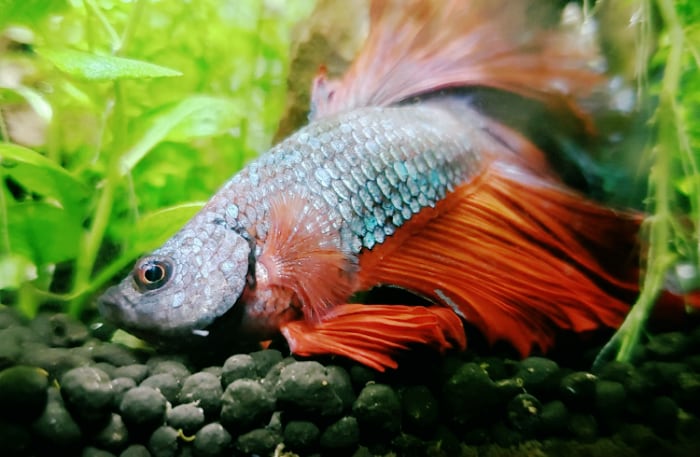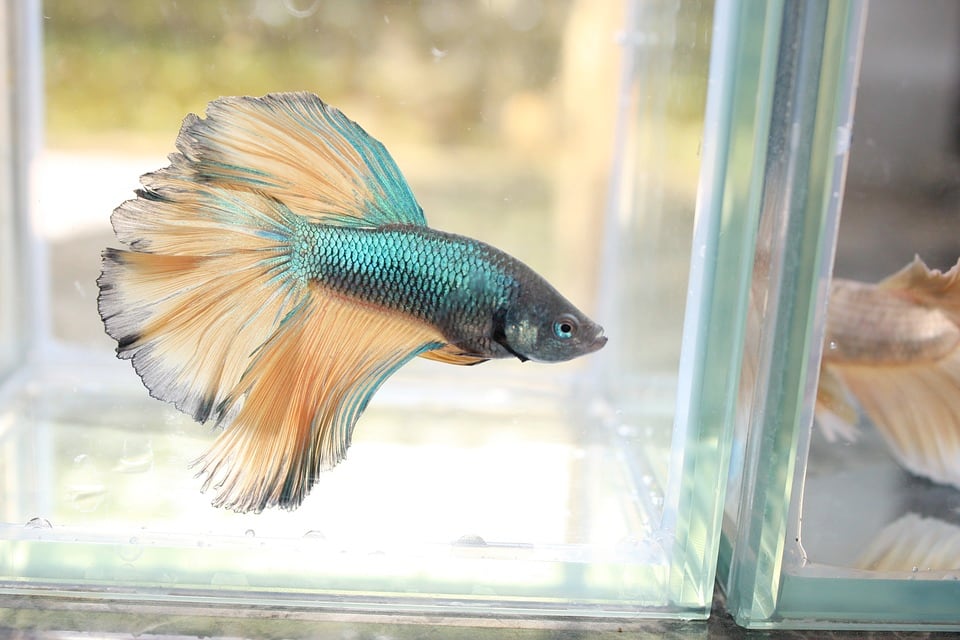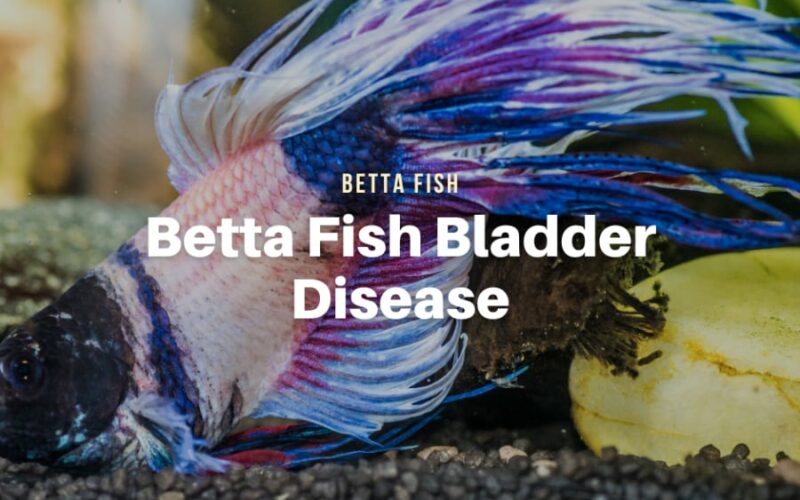Aquarium fish in your tank beautify the atmosphere, but you have to learn certain conditions that make you have to take some actions.
There is a condition named swim bladder disease where the fish can’t live properly in the tank. It also has some great risks to its health which leads to death.
Diseases in aquarium fish, including swim bladder disorder, contribute to the factor of shorter lifespan in the fish. It usually attacks betta variants and goldfish anytime. However, this disease is still treatable and you can get healthier fish with the right treatment.
This disease is not because of the virus, but the lifestyle of the fish. Since their life depends on the habits of the owner, you need to maintain their health daily.
Here is some information that you need to know about this disease to keep your aquarium fish healthy.
What is Swim Bladder Disease?
The swim bladder is one of the important anatomies in aquarium fish. This organ has a role to maintain the relativity of fish’s buoyancy in the water. They can swim and float because of the swim bladder. When the swim bladder disease attacks them, they have issues with swimming and floating (such as floating on its side).
You can notice this issue when the fish have issues when they swim. They are not stable in the water because they have problems with this essential organ. When the disease is getting worse, the fish tend to sink into the tank. These are the main symptoms of this disease.
Can the fish recover from swim bladder disorder?
Even though it is not easy, the fish can completely be healthy again as before. This is why you need to check properly whether the fish suffer from this disease or not when you see some symptoms. You have to diagnose your fish properly by asking the vet.
How long will bettas recover?
As soon as the infection or disorder in its bladder swims, if cured, you will find them to be healthy again. They no longer struggle to swim in the tank. You only have to maintain the environment and lifestyle of the fish afterward.
Can the fish die because of swim bladder disease?
The possibility of dying fish is very high once they get infected with this disease. In a few days without proper treatment, you will see the fish floating on its side and dies. Since it is a fatal condition, you have to resolve the problems as soon as you notice the symptoms are directed to swim bladder disease.
Symptoms of Swim Bladder Disease

Here are the some common symptoms in swim bladder disease.
1. Floating on the tank
Fish can swim well. As aquarium fish, they will be floating on their side, sometimes to the top or the bottom. If they are agile enough, it means they are healthy. However, when they only float on the surface of the tank, it can be a sign of swim bladder disease.
They can’t sink again because of the buoyancy they have because of the disease. It is no longer neutral and they cannot control themselves to swim well. They may stay on top even though there is no food the owner gives them. Sometimes, the head is at the top as well.
2. Sinking
Another symptom that you may notice is when they tend to stay at the bottom of the aquarium. The fish is usually staying on the floor and the head is at the bottom. Meanwhile, the body of the fish faces upright. They look struggling but they cannot balance themselves.
This is also one of the symptoms of swimbladder disease. The fish with more than average weight tend to sink in the water. It looks like head-standing. If this is occurring for more than hours, it is a noticeable disease that you have to cure as soon as possible.
3. Struggling upright
The movement when they swim is easy to notice whether they suffer from swim bladder disorder or not. Since they have buoyancy problems, you can see they are becoming more passive in the water. They try to stay upright, but instead, they are on their sideways.
The fins of the fish are struggling more than usual. You can see that its movement is no longer natural. This excessive movement is a sign that they are imbalanced. Even when you put some food in the water, they look more struggling to float to the surface of the water.
4. Abnormal back
Another sign to notice is the shape of its back. The part of its back usually changes into a curve. You can compare it with other healthy fish to notice this change. It is because the organs in the abdomen push to other sides. Compare with other fish in the same category as yours.
5. Losing its appetite
Aquarium fish have a great appetite, especially in several categories. When they lose their appetite, it can be a sign of swim bladder disease. They don’t have any interest in the food you give. They are hungry, but they don’t move to the surface to eat them.
You may notice it when they only let the food on the surface until it influences the color of the water in the tank. This appetite loss is dangerous because they don’t have enough nutrients to stay longer. If this keeps happening, the fish will die soon.
6. Passively moving
If the fish is passively moving, it can be that the environment is not supported if they have swim bladder disease. They no longer have any will to move because they are struggling with it at first. When they are tired of trying, they usually stay in one spot.
Since they are so passive, they might not try to get the food when it is time for them to eat. Worse, less exercise also can make the swim bladder disease get worse. If you find they become more passive in the last two days, you have to find a solution for their treatment.
7. Difficulty in breathing
Another sign of swim bladder disease is when the fish has difficulty in breathing. Their fins have an excessive movement that you may notice that is more unusual than it should be. It means that they try to catch the oxygen in the water, but they fail to get the amount they must take.
The Causes of Swim Bladder Disease
There are several things that can lead to swim bladder disease. Make sure to take notes.
1. Overeating
The main reason why fish get swim bladder disorder is overeating. Overeating habits come when the owner doesn’t have the right schedule of feeding. If they keep eating from time to time, their bladder will enlarge and it is a fatal condition for the fish.
2. Rapid eating
Rapid easting is also a trigger to make them have swim bladder problems. This is a habit that the owner should avoid when they give fish food daily. If in a tank there is only a single fish, give the food properly. Aquarium fish only need to eat once a day.
3. Constipation
Another trigger that may happen to your betta is constipation. This problem is very serious because it will make them suffer for days and the chance of dying is higher. Constipation is usually the beginning of other diseases as well in aquarium fish.
4. Too much dry food
Even though dry food is one of its best diets daily, the amount of excessive dry food can be dangerous as well for the fish. Their diet should be balanced and have more than two varieties. As the owner, you have to know the best food and make a proper schedule for the fish’s diet.
5. Fat in the liver
The size of a fish’s liver is not large, but it can be a place to save excessive fat in the body. If the amount of fat is too much, swim bladder disease can be a big problem. Their bladder will enlarge and they find it difficult to swim properly after that.
6. Infection
Another reason why fish get swim bladder disease is infection. Infection is very dangerous for them and usually, it is from bacteria or parasites in the tank. A clean environment in the tank is vital to prevent the fish from getting this disease.
7. Tank temperature
Since this disease only attacks aquarium fish, the temperature also a vital role to make them have a longer lifespan. Tank temperature shouldn’t be lower than tropical temperature because it is a big trigger for them to live and swim properly in the tank.
If you find out that the temperature is colder, setting a heater for the tank is important. It keeps the temperature in the range. When it is time to sleep, you can lower the temperature again.
8. Hard stream
We usually put the stream for the tank, so life in the aquarium is more lively. Though it is normal, aquarium fish don’t live under a hard stream. You should adjust the speed of the stream to prevent the risk of swim bladder disease.
9. Genetics
Another reason for getting this disease is genetics. It is something that the fish cannot avoid at all costs. This disease sometimes is found at the early age of aquarium fish. The earlier treatment is important so they can live longer.
The Treatment of Swim Bladder Disease

If your fish have swim bladder disease symptoms, here are several things you can do to treat it.
1. Fasting fish
The fasting method is simple when they have swim bladder disease. Even though the aquarium fish love eating their food, fasting for three days won’t hurt them. It gives the fish a chance to have proper digestion because of their enlarged stomach.
Since they don’t eat anything, you have to make sure that other factors in their environment are safe. The water should be clear and clean with a low-speed stream. The filter for the water should work properly. The water temperature should be in the range of tropical freshwater.
2. Setting the temperature
You need to set the temperature for the fish. The average good temperature for swim bladder disease is in the range of 78-80 Fahrenheit. While they are fasting, this temperature helps them from coldness because of the water.
Cold water is a source of swim bladder as well. Their bladder is getting frozen and invites the disease to get worse. During the treatment, the temperature should be in the right measurement. For the right temperature, you can buy a thermometer to measure the temperature.
3. Antibiotics medicine
Another treatment that can give the fish a chance to live better is by giving antibiotics. However, you cannot give them as you wish. The measurement should be under consultation with the vet. They will decide the dose and how long the medicine should be taken by the fish.
You have to avoid giving antibiotics just because you find some swim bladder disease in your fish. Some causes & symptoms are similar to how to treat constipated guppy fish. So, you should discuss and ask further about the issue that your aquarium fish has.
4. Giving proper dietary
Even though the aquarium fish you have is a carnivore, it is better to give them some fibers once you find out that they have swim bladder disorder. A proper diet helps them to have better digestion, so bloating issues because of this disease can be solved. A good source of fiber is peas.
However, you can not give peas without making them mushy. You can soak the peas in a bowl for a day or in hot water. After that, the peas will change into a mushy form. You can give the mushy peas into the tank in a proper amount. The fiber helps them to get better in days.
5. Adjust the current the fish tank
The current in the aquarium shouldn’t be too strong. The strong current affects the fish because they cannot swim well. With stronger current, it stops them from moving freely in the tank. You may stop the current during the treatment and let the fish move freely without any current help.
6. Reducing water level
This can be one of the treatment methods that you can try for the fish. Too much water in the tank gives bigger pressure and it is hard for the fish to swim. By reducing the water level in the aquarium, the fish is easy to move, especially when they try to get some food on the surface.
7. Giving salt
You can give some aquarium salt to the tank as a treatment for your fish swim bladder. The salt should be sodium chloride and the amount should be average. For every two grams of salt, it is only right for a liter of water. You have to adjust the amount of water in the tank.
However, there is a caution when you give salt to the aquarium. For the fish which already have this disease, it is better if they have separate aquariums. Especially, when you have more than one fish in the tank with different categories. Some species might be sensitive to salt.
8. Improve water quality
Another thing you should be careful with is the water quality. The best water when you do the treatment is pristine water. It means the water doesn’t have additional minerals that will influence the quality of the water.
9. Separate the fish
Does swim bladder contagious? When you find out that one of your aquarium fish has swim bladder, you have to separate them into different tanks. Other fish might be contagious to other fish in the same habitat.
How to Prevent Swim Bladder Disease
We can help prevent our bettas from getting swim bladder disease. Here some tips to help you start with:
1. Setting the higher temperature
The average temperature for aquarium fish is about 80 degrees Fahrenheit. You can set it to another level that is warmer than it should be. Warmer water helps the fish to have better digestion. So, the bloating problem because of this disease can be prevented.
You might need a proper heater for the aquarium. Setting the heater to 90 degrees of Fahrenheit, especially when the atmosphere in your area is colder. If you live in an area with winter, the heater should be ON every day.
2. Maintaining tank environment
The tank environment has an important role to keep the fish away from swim bladder disease. The tank should have a good filter that works well 24/7. The dust and debris in the water will be in the trap of the filter, so the water quality is good before you clean the whole water.
You also have to change the water at least once a week. If your aquarium fish is actively eating many kinds of food, the water will be dirty faster than usual. So, changing the water is a good prevention for all kinds of aquarium fish.
3. Don’t overfeed
Overfeeding is one of the bad triggers that can cause issue with your fish swim bladder. You should have a proper schedule to feed the fish daily. Aquarium fish don’t need much food every day. You can feed them only once a day and they are still living in a good state.
Overfeeding the fish also creates a dirtier environment. The more food you add to the aquarium, the more excessive food floats on the surface. It is not good for aquarium fish in general. They might not be able to be in the filter trap.
4. Check the food quality
Food quality is very vital to maintain their health. Aquarium fish might need a variety of food. Some owners usually give the fish some dried food, but the fish don’t always need that. Some species usually live better with live food such as worms.
The fish might have an allergy too. So, giving proper food with the right amount will give you an idea of whether the food is good or bad for them. You have to check the expiry date as well. Expiry food is a big trigger for swim bladder disease.
5. Avoid the fish from the stressor
Betta fish can be stressed too and it triggers the swim bladder disease at an earlier age. Some fish might need good sleep in a dark area in the tank. If the tank has some lights at night, you have to turn them off. So, the fish can sleep well. They usually sleep for five hours.
Some stressors can be from the tank mate. If you notice that they don’t blend well in the same habitat, you should separate them. Some aquarium fish live better lives in a tank. All environments focus on themselves.
When you notice that the fish has some symptoms that are similar to the swim bladder disorder, you have to take action soon. This disease is dangerous, and the fatal condition encourages the fish to have a shorter lifespan in a few days.
The swim bladder disease might be only a temporary disease in your aquarium fish. It is treatable if you notice the symptoms early. You can treat them with the steps above and do some preventive actions, so the fish can live better without the threat of this disease.



